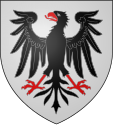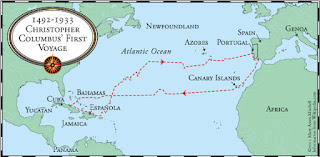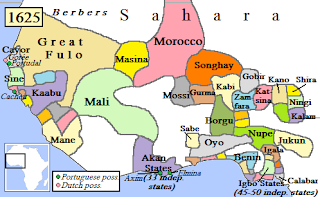sicily: a tale of two sicilies
PREAMBLE
The kingdom of sicily was a state that thrived in the southern italy from 1130 to 1816 when it merged with the kingdom of the naples . the kingdom of sicily was founded by roger II in what was a successor state of the county of sicily , that has started as far back as 1071 during the conquest of southern italy by the normans . along side the island of sicily the kingdom covered the maltese archipelago and the mezzogiorno region of southern Italy.
 In 1282 a succession against the
In 1282 a succession against the History
Norman conquest
By the 11th century mainland southern Italian powers were hiring Norman mercenaries, who were descendants of the Vikings; it was the Normans under Roger I who conquered Sicily, taking it away from the Arab Muslims. After taking Apulia and Calabria, he occupied Messina with an army of 700 knights. In 1068, Roger I of Sicily and his men defeated the Muslims at Misilmeri but the most crucial battle was the siege of Palermo, which led to Sicily being completely under Norman control by 1091.
Norman kingdom
The Norman Kingdom was created on Christmas Day, 1130, by Roger II of Sicily, with the agreement of Pope Innocent II, who united the lands Roger had inherited from his father Roger I of Sicily. These areas included the Maltese Archipelago, which was conquered from the Arabs of the Emirates of Sicily; the Duchy of Apulia and the County of Sicily, which had belonged to his cousin William II, Duke of Apulia, until William's death in 1127; and the other Norman vassals. Roger threw his support behind the Antipope Anacletus II, who enthroned him King of Sicily on Christmas Day 1130.[4]
In 1136, the rival of Anacletus, Pope Innocent II, fief to the Empire, which Lothair refused after being pressured by Innocent. At the same period the army of Lothair revolted.
convinced Lothair III, Holy Roman Emperor to attack the Kingdom of Sicily with help from the Byzantine Emperor John II Comnenus. Two main armies, one led by Lothair, the other by Duke of Bavaria Henry the Proud, invaded Sicily. On the river Tronto, William of Loritello surrendered to Lothair and opened the gates of Termoli to him.This was followed by Count Hugh II of Molise. The two armies were united at Bari, from where in 1137 they continued their campaign. Roger offered to give Apulia as a
convinced Lothair III, Holy Roman Emperor to attack the Kingdom of Sicily with help from the Byzantine Emperor John II Comnenus. Two main armies, one led by Lothair, the other by Duke of Bavaria Henry the Proud, invaded Sicily. On the river Tronto, William of Loritello surrendered to Lothair and opened the gates of Termoli to him.This was followed by Count Hugh II of Molise. The two armies were united at Bari, from where in 1137 they continued their campaign. Roger offered to give Apulia as a
Then Lothair, who had hoped for the complete conquest of Sicily, gave Capua and Apulia from the Kingdom of Sicily to Roger's enemies. Innocent protested, claiming that Apulia fell under papal claims. Lothair turned north, but died while crossing the Alps on December 4, 1137. At theSecond Council of the Lateran in April 1139, Innocent excommunicated Roger for maintaining a schismatic attitude. On March 22, 1139, at Galluccio, Roger's son Roger III, Duke of Apulia ambushed the papal troops with a thousand knights and captured the pope. On March 25, 1139, Innocent was forced to acknowledge the kingship and possessions of Roger with the Treaty of Mignano.
Roger spent most of the decade, beginning with his coronation and ending with the Assizes of Ariano, enacting a series of laws with which Roger intended to centralise the government, fending off multiple invasions and quelling rebellions by his premier vassals: Grimoald of Bari, Robert II of Capua, Ranulf of Alife, Sergius VII of Naples and others.
It was through his admiral George of Antioch that Roger then proceeded to conquer the Mahdia in Africa (Ifriqiya), taking the unofficial title "King of Africa". At the same time Roger's fleet attacked the Byzantine Empire, making Sicily the leading maritime power in the Mediterranean Sea for almost a century.
Roger's son and successor was William I of Sicily, known as "William the Bad", though his nickname derived primarily from his lack of popularity with the chroniclers, who supported the baronial revolts which William suppressed. His reign ended in peace (1166), but his son, William II, was a minor. Until the end of the boy's regency in 1172, the kingdom saw turmoil which almost brought the ruling family down. The reign of William II is remembered as two decades of almost continual peace and prosperity. For this more than anything, he is nicknamed "the Good". He died in 1189 without having heirs, which led the kingdom to decline.
Tancred of Lecce seized the throne but had to contend with the revolt of his distant cousin Roger of Andria and the invasion of Henry VI, Holy Roman Emperor on behalf of his wife, Constance, the daughter of Roger II. Constance and Henry eventually prevailed and the kingdom fell in 1194 to the House of Hohenstaufen. Through Constance, the Hauteville blood was passed to Frederick II, Holy Roman Emperor.
Hohenstaufen kingdom
The accession of Frederick, a child who would then become also the Holy Roman Emperor Frederick II in 1197, greatly affected the immediate future of Sicily. For a land so used to centralised royal authority, the king's young age caused a serious power vacuum. His uncle Philip of Swabia moved to secure Frederick's inheritance by appointing Markward von Anweiler, margrave of Ancona, regent in 1198. Meanwhile, Pope Innocent III had reasserted papal authority in Sicily, but recognised Frederick's rights. The pope was to see papal power decrease steadily over the next decade and was unsure about which side to back at many junctures.
The Hohenstaufen's grip on power, however, was not secure. Walter III of Brienne had married the daughter of Tancred of Sicily. She was sister and heiress of the deposed King William III of Sicily. In 1201 William decided to claim the kingdom. In 1202, an army led by the chancellor Walter of Palearia and Dipold of Vohburg was defeated by Walter III of Brienne. Markward was killed, and Frederick fell under the control of William of Capparone, an ally of the Pisans. Dipold continued the war against Walter on the mainland until the claimant's death in 1205. Dipold finally wrested Frederick from Capparone in 1206 and gave him over to the guardianship of the chancellor, Walter of Palearia. Walter and Dipold then had a falling out, and the latter captured the royal palace, where he was besieged and captured by Walter in 1207. After a decade, the wars over the regency and the throne itself had ceased.
The reform of the laws began with the Assizes of Ariano in 1140 by Roger II. Frederick continued the reformation with the Assizes of Capua (1220) and the promulgation of the Constitutions of Melfi( also known as Liber Augustalis, 1231), a collection of laws for his realm that was remarkable for its time.[7] The Constitutions of Melfi were created in order to establish a centralized state. For example, citizens were not allowed to carry weapons or wear armour in public unless they were under royal command. As a result, rebellions were reduced. The Constitutions made the Kingdom of Sicily an absolute monarchy, the first centralized state in Europe to emerge from feudalism; it also set a precedent for the primacy of written law. With relatively small modifications, the Liber Augustalis remained the basis of Sicilian law until 1819. During this period, he also built the Castel del Monte, and in 1224, he founded the University of Naples, now called Università Federico II. It remained the sole athenaeum of southern Italy for centuries.
After the death of Frederick, the Kingdom was ruled by Henry VII of Germany and Conrad IV of Germany. The next legitimate heir was Conrad II, who was too young at the period to rule. Manfred of Sicily, the illegitimate son of Frederick, took the power and ruled the kingdom for fifteen years while other Hohenstaufen heirs were ruling various areas in Germany. After long wars against the Papal States, the Kingdom managed to defend its possessions, but the Papacy declared the Kingdom escheated because of disloyalty of the Hohenstaufen. Under this pretext he came to an agreement with Louis IX, King of France. Louis's brother, Charles of Anjou, would become king of Sicily. In exchange, Charles recognized the overlordship of the Pope in the Kingdom, paid a portion of the papal debt, and agreed to pay annual tribute to the Papal States. The Hohenstaufen rule in Sicily ended after the 1266 Angevin invasion and the death of Conradin, the last male heir of Hohenstaufen, in 1268.
Angevin Sicily
Church of the Holy Spirit (Sicily).
In 1266, conflict between the Hohenstaufen house and the Papacy led to Sicily's conquest by Charles I, Duke of Anjou. With the usurpation of the Sicilian throne from Conradin by Manfred of Sicily in 1258, the relationship between the Papacy and the Hohenstaufen had changed again. Instead of the boy Conradin, safely sequestered across the Alps, the Papacy now faced an able military leader who had greatly supported the Ghibelline cause at the battle of Montaperti in 1260. Accordingly, when negotiations broke down with Manfred in 1262,Pope Urban IV again took up the scheme of disseising the Hohenstaufen from the kingdom, and offered the crown to Charles of Anjou again. With Papal and Guelph support Charles descended into Italy and defeated Manfred at the battle of Benevento in 1266 and in 1268 Conradin at the battle of Taglicozzo.
Opposition to French officialdom and taxation combined with incitement of rebellion by agents from the Crown of Aragon and the Byzantine Empire led to the successful insurrection of theSicilian Vespers followed by the invitation and intervention by king Peter III of Aragon in 1282. The resulting War of the Sicilian Vespers lasted until the Peace of Caltabellotta in 1302, dividing the old Kingdom of Sicily in two. The island of Sicily, called the "Kingdom of Sicily beyond the Lighthouse" or the Kingdom of Trinacria, went to Frederick III of the house of Aragon, who had been ruling it. The peninsular territories, contemporaneously called Kingdom of Sicily but called Kingdom of Naples by modern scholarship, went to Charles II of thehouse of Anjou, who had likewise been ruling it. Thus, the peace was formal recognition of an uneasy status quo.[11] The division in the kingdom became permanent in 1372, with the Treaty of Villeneuve. Though the king of Spain was able to seize both crowns in the 16th century, the administrations of the two halves of the Kingdom of Sicily remained separated until 1816, when they were reunited in the Kingdom of Two Sicilies.
The parochial kingdom of Sicily under the Crown of Aragon and Spain
Sicily was ruled as an independent kingdom by relatives or cadet branch of the house of Aragon until 1409 and thence as part of the Crown of Aragon. The Kingdom of Naples was ruled by the Angevin ruler René of Anjou until the two thrones were reunited byAlfonso V of Aragon, after the successful siege of Naples and the defeat of René on June 6, 1443.[12] Eventually, Alfonso of Aragon divided the two kingdoms during his rule. He gave the rule of Naples to his illegitimate son Ferdinand I of Naples, who ruled from 1458 to 1494, and the rest of the Crown of Aragon and Sicily to Alfonso's brother John II of Aragon. From 1494 to 1503 successive kings of France Charles VIII andLouis XII, who were heirs of Angevins, tried to conquer Naples (see Italian Wars) but failed. Eventually the Kingdom of Naples was reunited with the Crown of Aragon. The titles were held by the Aragonese kings of the Crown of Aragon until the end of the Spanish branch of the House of Habsburg in 1700.
Malta under the Knights
In 1530, in an effort to protect Rome from Ottoman invasion from the south, Charles V, Holy Roman Emperor, as Charles I of Spain, gave the Islands of Malta and Gozo to the Knights Hospitaller in perpetual fiefdom, in exchange for an annual fee of two (one for the emperor and one for the viceroy of Sicily) Maltese falcons, which they were to send on All Souls' Day to the Viceroyof Sicily. The Maltese Islands had formed part of the County, and later the Kingdom of Sicily, since 1091. The feudal relationship between Malta and the Kingdom of Sicily was continued throughout the rule of the Knights, until the French occupation of Malta in 1798.
The occupation was not recognized, and Malta was de jure part of the Kingdom of Sicily from 1798 to 1814. After the Maltese rebellion against the French, Malta was under British protectionuntil it became a British crown colony in 1813. This was officially recognized by the Treaty of Paris of 1814, which marked the end of Malta's 700-year relationship with Sicily.
The War of the Spanish Succession
From 1713 until 1720 the Kingdom of Sicily was ruled briefly by the House of Savoy, which had received it by the terms of the Treaty of Utrecht, which brought an end to the War of the Spanish Succession. The kingdom was a reward to the Savoyards, who were thus elevated to royal rank. The new king, Victor Amadeus II, travelled to Sicily in 1713 and remained a year before returning to his mainland capital, Turin, where his son the Prince of Piedmont had been acting as regent. In Spain the results of the war had not been truly accepted, and the War of the Quadruple Alliance was the result. Sicily was occupied by Spain in 1718. When it became evident that Savoy had not the strength to defend as remote a country as Sicily, Austria stepped in and exchanged its Kingdom of Sardinia for Sicily. Victor Amadeus protested this exchange, Sicily being a rich country of over one million inhabitants and Sardinia a poor country of a few hundred thousand, but he was unable to resist his "allies". Spain was finally defeated in 1720, and the Treaty of the Hague ratified the changeover. Sicily belonged to the Austrian Habsburgs, who already ruled Naples. Victor Amadeus, for his part, continued to protest for three years, and only in 1723 decided to recognize the exchange and desist from using the Sicilian royal title and its subsidiary titles (such as King of Cyprus and Jerusalem).
The two kingdoms under the house of Bourbon
In 1735, Naples and Sicily were reconquered by King Philip V of Spain, a Bourbon, who installed his younger son, Duke Charles of Parma, as KingCharles VII of Naples and Sicily, starting a cadet branch of the house of Bourbon. In 1799 Napoleon conquered Naples, governed byFerdinand IV of Naples (later Ferdinand I of the Two Sicilies) at the time. It was formed into theParthenopaean Republic with French support. Under British pressure, especially from Lord William Bentinck, who was commander of British troops in Sicily, Naples was then handed back to Ferdinand, being forced to create a constitution for the Kingdom of Sicily.
A two-chamber parliament in Palermo and in Naples was formed. The formation of the parliament brought the end of feudalism in the Kingdom. After the defeat of Napoleon in 1815 Ferdinand repealed all reforms. The people of Sicily rebelled but were defeated by Spanish and Austrian forces. In 1848 another Sicilian revolution of independence occurred, which was put down by Ferdinand II of the Two Sicilies, who was surnamed Re Bomba after his 5-day bombardment of Messina. From 1816 to 1861 the kingdoms were united under the name Kingdom of the Two Sicilies.
posted by Adebari olalekan oluwaseun
for further info visit:
https://en.wikipedia.org/wiki/Kingdom_of_Sicily









Comments
Post a Comment